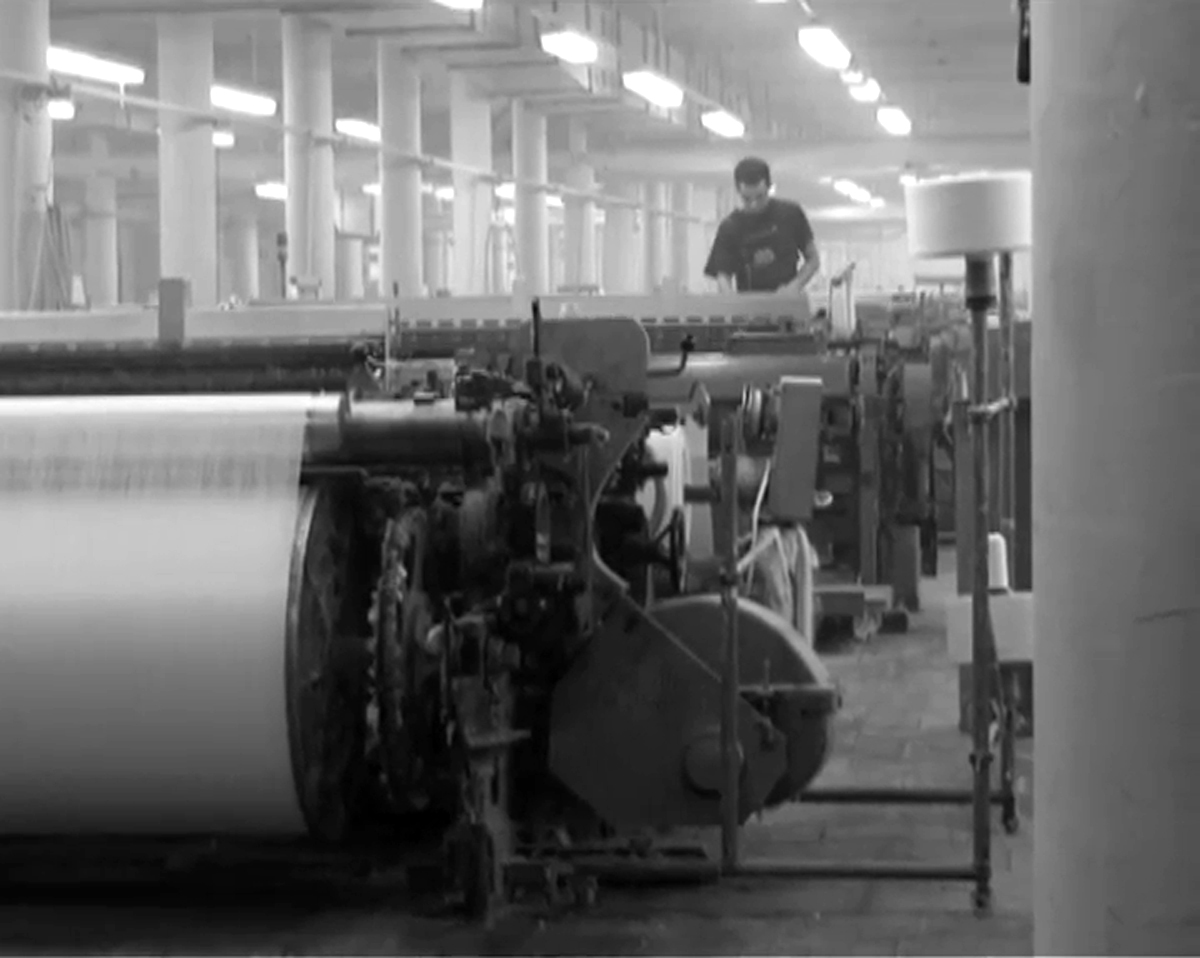2010, 31 min, vidéo
Version russe sous-titrée anglais

Vabrik, filme l’usine et l’image transmise de l’usine: une manufacture de textile en Estonie sur la rivière frontalière avec la Russie. Vabrik, (“usine” en estonien), évoque l’histoire de l’industrie depuis le milieu du XIXe siècle. Les images montrent le passage de l’économie soviétique – en Estonie depuis 1944 – à l’économie capitaliste, avec ses limites actuelles : usine fermée, car elle ne peut continuer à se produire, économie des technocrates et des délocalisations. La production est toujours active, comme un dinosaure, l’usine se meurt lentement, quelques centaines de travailleurs aujourd’hui, alors qu’avant la perestroïka ils étaient 15.000.
La manufacture était le centre vital de la ville de Narva, toutes les familles depuis des générations y travaillaient. L’usine comprenait des dispensaires, crèches, écoles, bibliothèques… Avec quelques belles images de douce propagande des années 60-70s et mes images retraçant les derniers jours de l’usine, mon film interroge l’imagerie de l’usine et la compréhension de son évolution. Le film incarne un calme désespéré, parce que ce sont les dernières images de travailleurs confrontés à un licenciement imminent.
Vabrik is a film about the image of the factory more than the factory itself: a textile manufacture in Estonia on the river border with Russia. “Vabrik”, “factory” in Estonian, evokes the history of industry in the mid-nineteenth century to today. The images show the passages of the Soviet economy – in Estonia since 1944 – to the capitalist economy with its current limitations: factories closed because it can not continue to occur, we have moved from an economy in brandmaking technocrat and offshoring. The manufacture is still standing, and like a dinosaur is dying slowly. Several hundred workers are working today, whereas before the privatization of perestroika were 15,000.
The factory was the vital center of the city of Narva, all families worked for generations on its territory. There were clinics, nurseries, schools, libraries … With some beautiful images of soft propaganda of the years 60-70s and later with my images tracing the last days of the factory, my film questions this image of the factory and how one can understand its current developments. My pictures, first weaving images of the past and working units of printing, then sewing and packaging are calmly desperate, because these are the latest scores workers facing dismissal.
